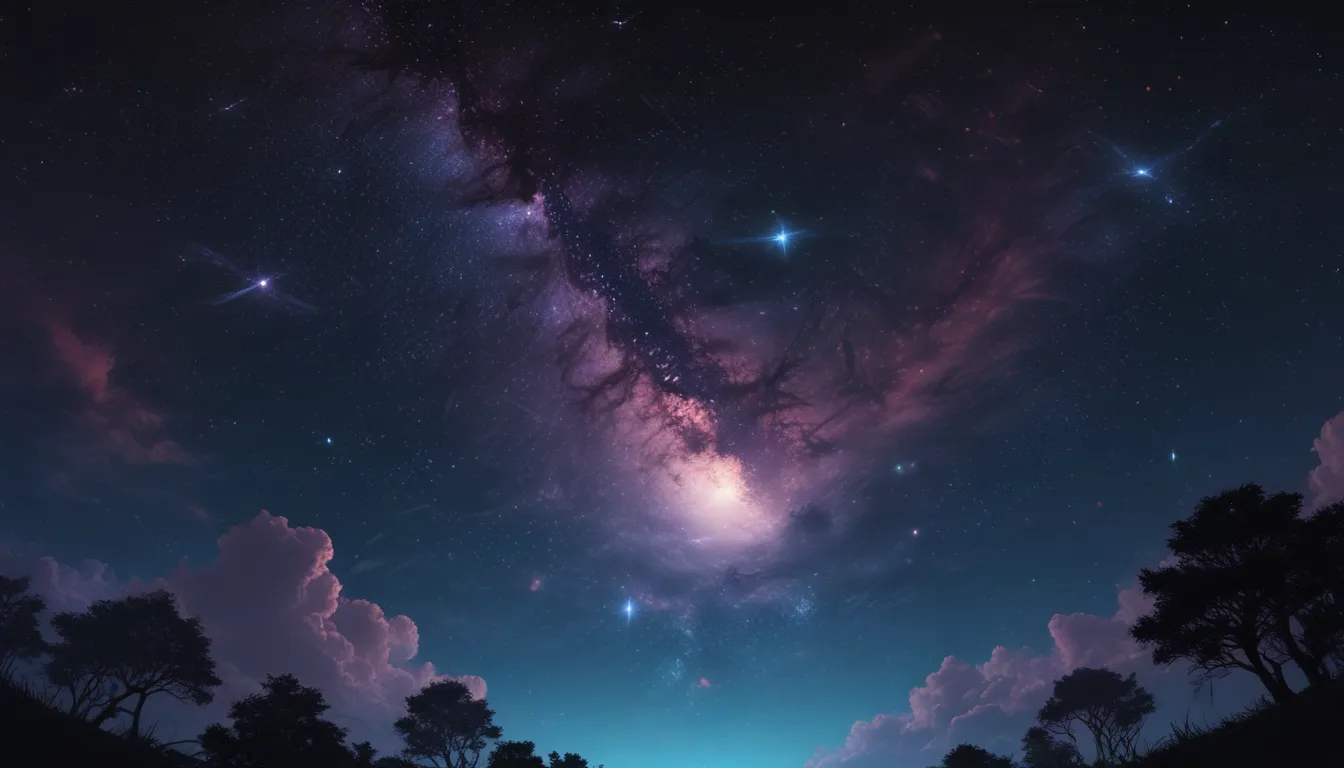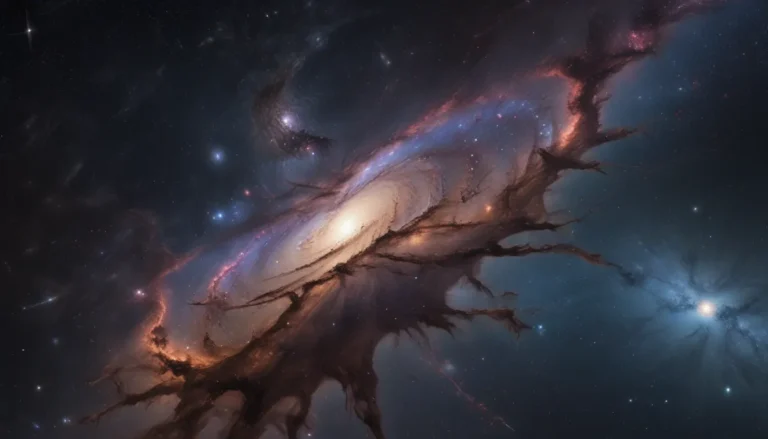The pictures we use in our articles might not show exactly what the words say. We choose these pictures to make you interested in reading more. The pictures work together with the words but don’t take their place. The words still tell you the important facts.
Have you ever gazed at the night sky, mesmerized by the shimmering beauty of stars? These celestial entities have captivated humans for centuries, offering a glimpse into the vastness of the universe and igniting a sense of wonder and curiosity within us. While we may be familiar with the basics of stars, such as their luminous glow and importance in the cosmos, there are numerous surprising facts about stars that continue to intrigue scientists and stargazers alike. Join us on a journey through the captivating world of stars as we unravel ten astonishing facts that unveil the mysteries of these cosmic wonders.
Stars: Diverse in Colors and Sizes
Stars are not just twinkling lights in the night sky; they come in a dazzling array of colors and sizes, each representing a unique temperature and stage of life. From vibrant blue stars to fiery red giants, the color of a star provides valuable insights into its characteristics. Furthermore, stars vary in size from tiny neutron stars to colossal supergiants, some hundreds of times larger than our own Sun.
Supernovas: Explosive Cosmic Dancers
Witnessing the spectacular explosion of a star, known as a supernova, is a breathtaking sight that releases an immense amount of energy, outshining entire galaxies. These cosmic fireworks are vital for the formation of new stars and the dissemination of essential elements that shape our world, highlighting the dynamic and transformative nature of stars.
The Guiding Light: Stars as Cosmic Beacons
Beyond their luminous beauty, stars act as celestial lighthouses, guiding sailors and travelers across vast distances. Thousands of years ago, sailors navigated the seas using the positions of stars, a tradition that continues to this day. Astronomers also rely on stars to chart the cosmos and unravel the mysteries of the universe, showcasing the enduring role of stars as guiding lights in the night sky.
The Sun: Our Closest Star
Did you know that the Sun, which bathes us in warmth and light, is a star too? Belonging to the main sequence of stars, the Sun is essential for sustaining life on Earth, providing the energy needed for our planet's ecosystems to thrive. Without the Sun's radiant glow, our world would be a cold and desolate place.
Stellar Romances: Binary Star Systems
In a cosmic ballet of celestial romance, two stars can merge to form a binary star system, where they orbit around each other in an intricate dance. These binary systems exhibit captivating behaviors, such as gravitational interactions and stellar collisions, showcasing the mesmerizing interplay between stars in the vast expanse of space.
Exoplanets: Worlds Beyond
Stars not only host other stars but also planets that revolve around them, giving rise to fascinating exoplanets with diverse sizes and compositions. Some exoplanets may harbor conditions suitable for life, offering tantalizing opportunities for extraterrestrial exploration and discovery in the cosmic frontier.
The Alchemy of Stars: Nuclear Fusion
Deep within the core of a star, the alchemical process of nuclear fusion unfolds, where lighter elements are fused together to form heavier ones, such as helium into carbon and oxygen. This stellar alchemy generates the essential elements needed for planetary formation, life, and even ourselves, underscoring the profound impact of stars on the fabric of the universe.
Stellar Companions: Multiple Star Systems
Stars often have companions, forming multiple star systems with a diverse array of stellar partners ranging from diminutive red dwarfs to massive stars locked in a gravitational embrace. The gravitational interplay between these companion stars can lead to captivating phenomena, including stellar eclipses and tidal forces that enrich our understanding of stellar dynamics.
Gravitational Lensing: Bending the Fabric of Space
According to Einstein's theory of general relativity, the intense gravitational fields surrounding stars can bend light, a phenomenon known as gravitational lensing. Astronomers harness this phenomenon to study distant galaxies and unravel the cosmic tapestry, shedding light on the secrets of the universe hidden within the gravitational embrace of stars.
Stellar Lifecycles: A Tale of Billions of Years
Stars possess remarkable longevity, with some blazing for billions of years before undergoing transformative changes as they exhaust their fuel. A star's lifespan is intricately linked to its mass, with larger stars burning through their resources more rapidly, leading to dramatic evolutionary stages such as expanding into red giants or collapsing into black holes, highlighting the dynamic and evolving nature of stars.
Embracing the Marvel of Stars
In conclusion, the enigmatic allure of stars continues to captivate humanity, unraveling the mysteries of the cosmos and inspiring awe and wonder in our hearts. The ten astonishing facts about stars presented in this article offer a glimpse into the mesmerizing world of these celestial entities, from their diverse colors and sizes to their transformative lifecycles. Whether it's the cosmic ballet of binary star systems or the alchemical magic of nuclear fusion, exploring stars opens a gateway to a realm of knowledge and appreciation for the universe's vastness and complexity. So, the next time you look up at the night sky, pause and reflect on the wonders of the stars and the infinite possibilities they hold within the cosmic tapestry.
Exploring the Galaxy: Frequently Asked Questions
Q: How do stars form?
A: Stars are born from giant molecular clouds of gas and dust, collapsing under the force of gravity to ignite nuclear fusion and give birth to a star.
Q: How long do stars live?
A: The lifespan of a star varies based on its mass, with smaller stars living for billions of years and larger stars having shorter lifetimes, sometimes only a few million years.
Q: Can stars die?
A: Yes, stars eventually exhaust their fuel and undergo structural changes, leading to their demise as white dwarfs, neutron stars, or black holes, depending on their mass.
Q: Can we visit other stars?
A: With current technology, it is not feasible to visit other stars in person due to vast distances that would require thousands of years to traverse. However, robotic missions like Voyager provide valuable insights into neighboring stars.
Q: How hot are stars?
A: Stars exhibit a wide range of temperatures, from a few thousand degrees Celsius for cooler stars to millions of degrees Celsius for the hottest stars, reflecting their diverse nature.
Navigating the Cosmic Odyssey
Stars unveil a tapestry of wonders, from their vibrant colors and colossal sizes to their transformative lifecycles and gravitational influences. As we peer into the night sky and marvel at the celestial splendor above, we are reminded of the infinite mysteries waiting to be unraveled in the cosmic expanse. Join us on this cosmic odyssey as we delve deeper into the enigmatic world of stars, where each twinkle in the sky tells a story of cosmic evolution and celestial harmony. Let the stars guide you on a journey of discovery and enlightenment, igniting the spark of curiosity and wonder within your soul as you navigate the cosmic seas of eternity. Embrace the marvel of stars, for they are not just distant lights in the sky but cosmic beacons illuminating the path to a universe brimming with infinite possibilities and boundless wonders.






